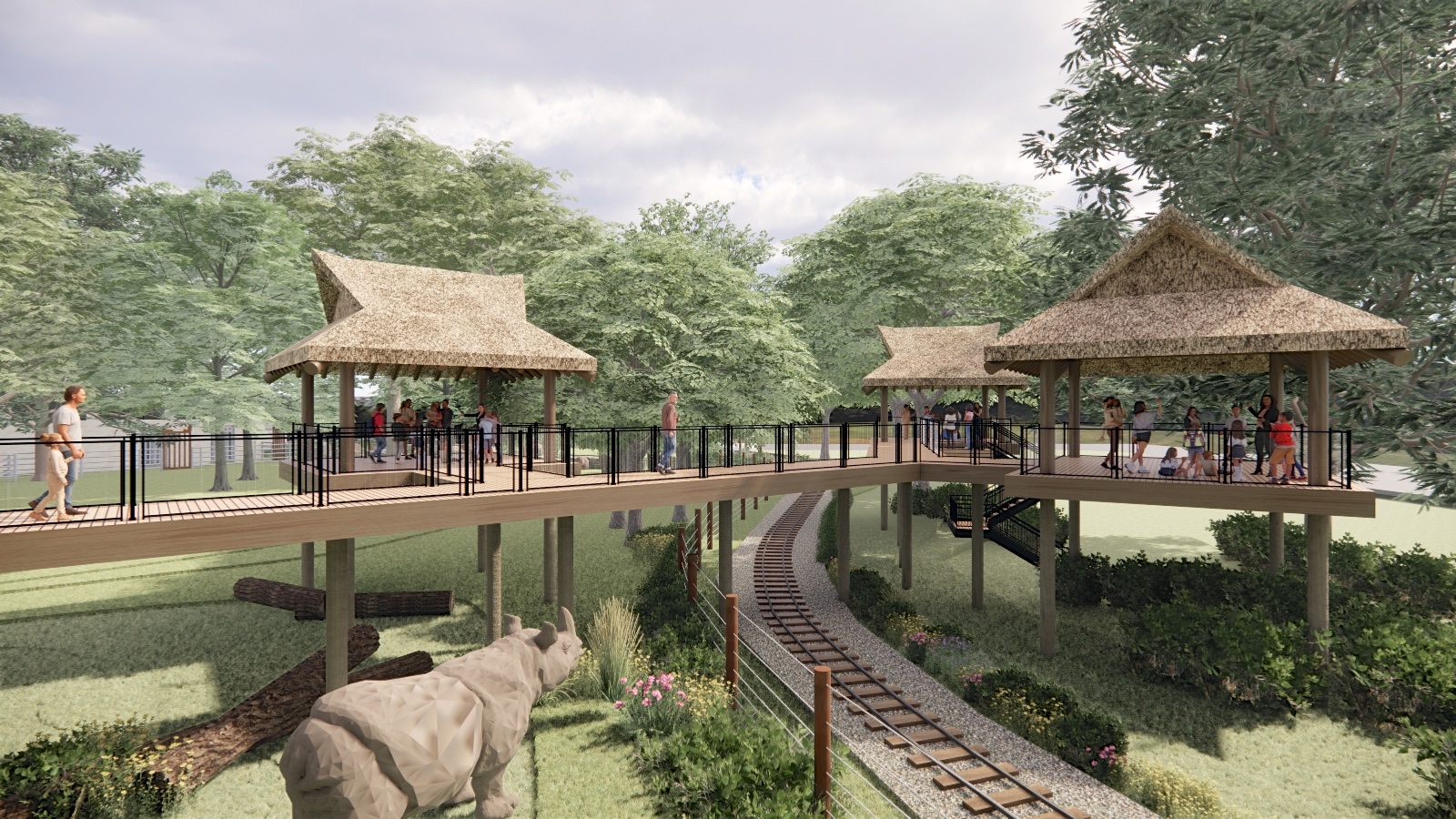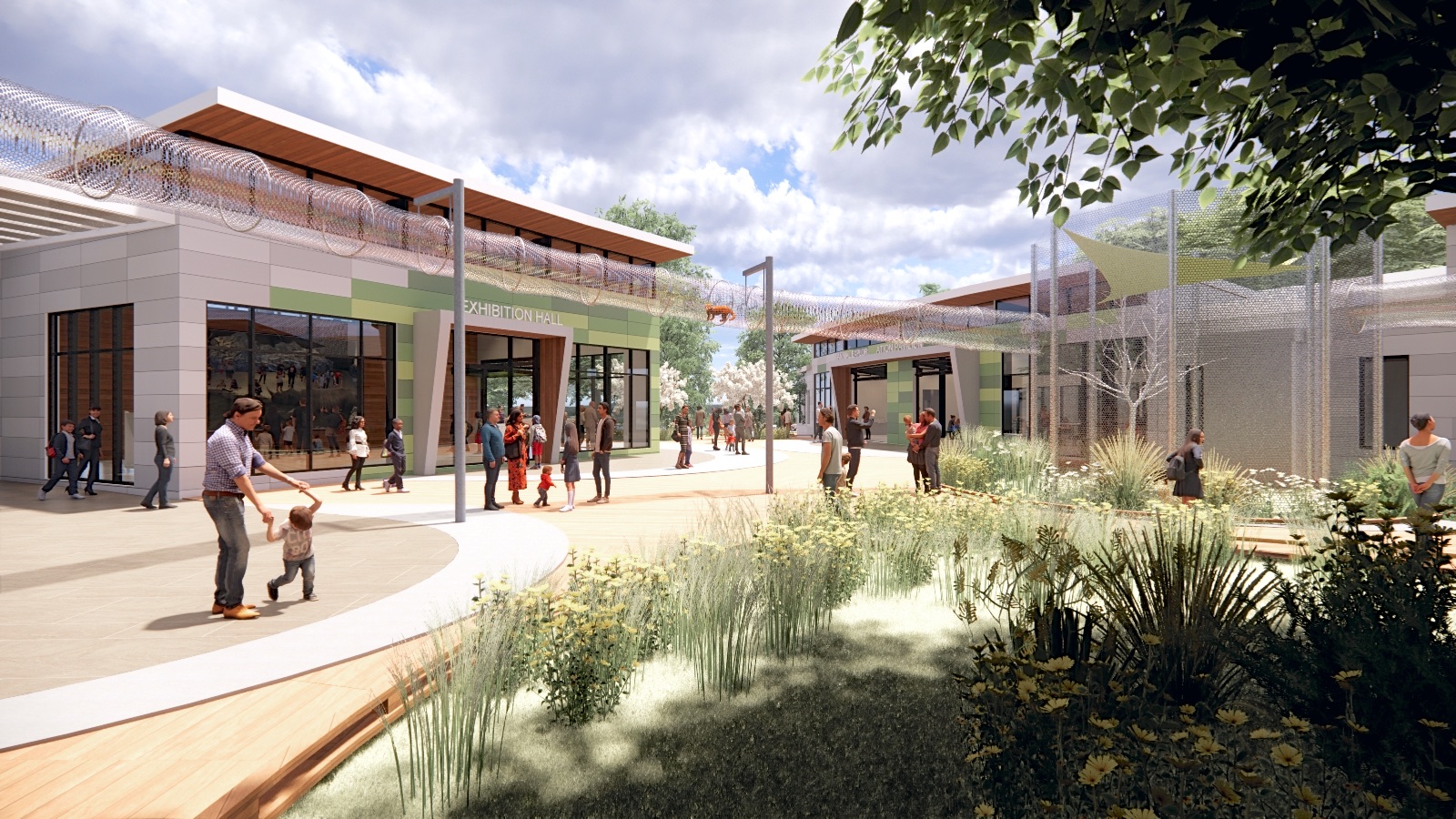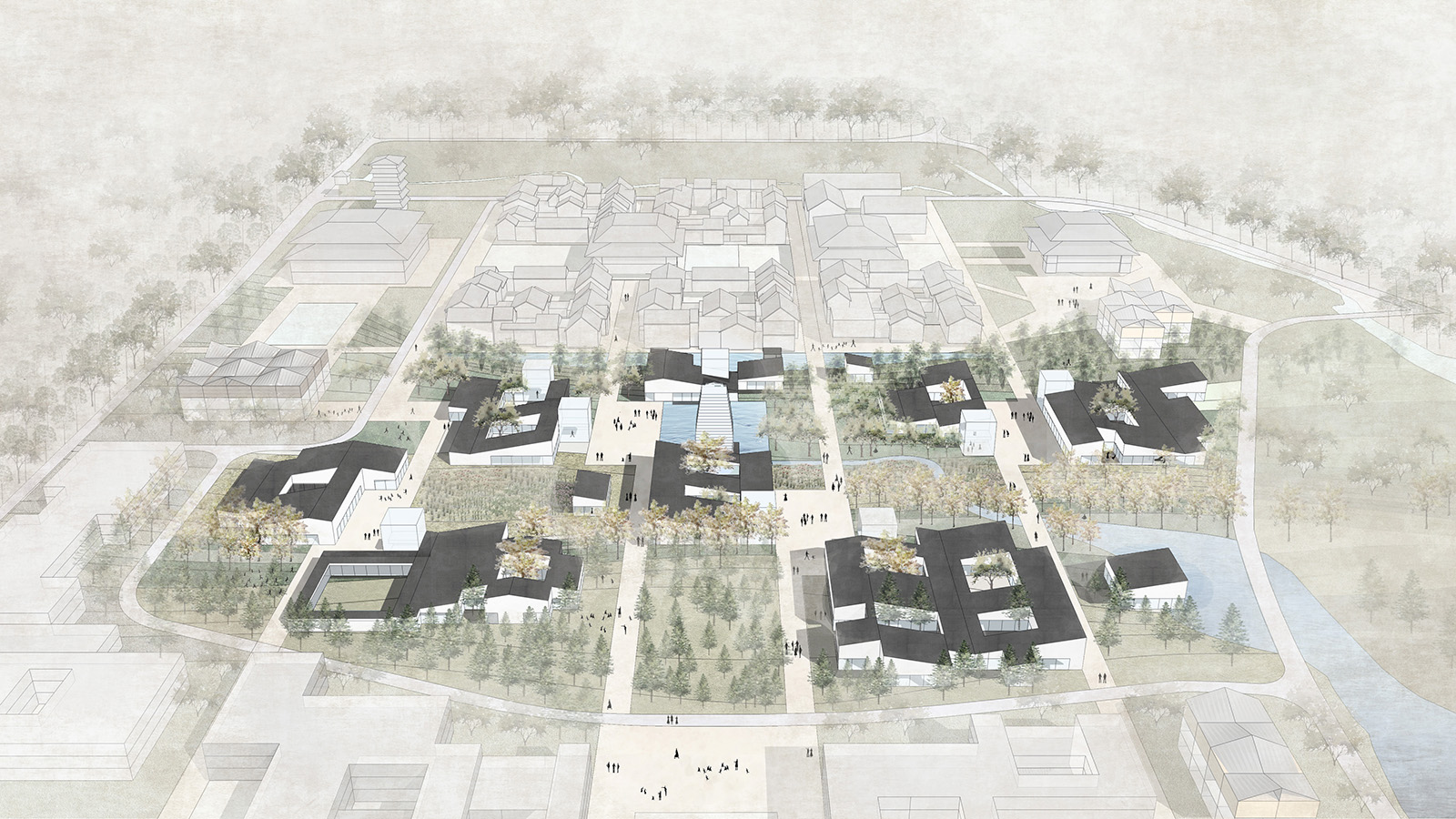Rhino Exhibit
Norfolk, VAType/ Culture
Time/ 2023-
Client/ Virginia Zoo
Status/ Design
The Rhino Exhibit, a new addition to the Virginia Zoo, is dedicated to the
Greater One-Horned Rhinos, also known as “Indian Rhinos.” The zoo eagerly
anticipates the arrival of these magnificent animals upon exhibit’s
completion. Due to the distinctive environmental needs of their natural habitats,
the Greater One-Horned Rhinos require specially tailored conditions
to thrive.
Strategically located at the southwest corner of the Zoo as part of the Asian
Trail, the selected site for the new Rhino Exhibit is adjacent to the driveway
from Granby Road, leading directly to the parking lot and main entrance.
The site will host a Rhino Facility and a series of outdoor habitats specifically
designed for rhinos. Additionally, the exhibit will include new amenities
such as three Tree-houses, a Boardwalk Extension, and a Rhino Experience
with an overhead shaded structure, all designed to provide visitors multiple
unique perspectives and immersive experiences.
Another distinctive feature of the site is the Virginia Zoo Express train track,
which runs along more than half of the perimeter. As a result, the Rhino Exhibit
becomes the exclusive exhibit at the zoo that offers visitors the unique
opportunity to enjoy a close-up view from the train.

.
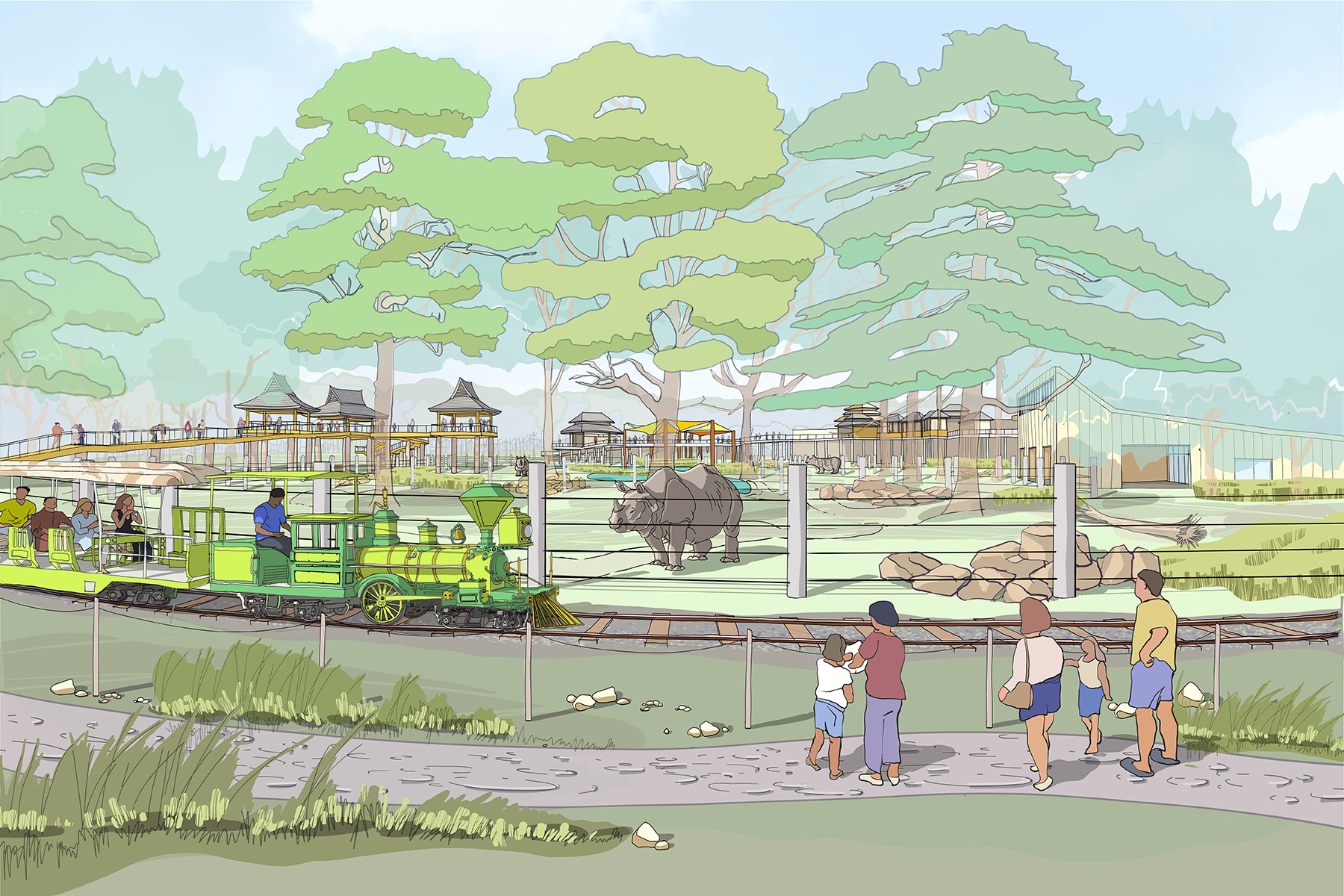
Early Concept

The Rhino Facility is located on the southwest side of the site, adjacent to
the existing train shed. It is dedicated to rhinos and the zookeepers who care
for them without visitor access. To enhance visitor engagement, the train
shed wood cladding will be modified to improve viewing from the train.
Large storefront windows in the new building will allow visitors to peek
inside the facility as the train either stops or slows down at the modified
Train Shed. This feature offers an educational moment, where zoo staff can
explain the indoor living conditions of the Indian rhinos and the care they
receive in their ‘home’.
The architectural design of the Rhino Facility draws inspiration from the
distinct horn of the Indian rhinos. The west end of the building features
a sloped roof with an increased pitch, designed to mimic the sharp rise of
a rhino’s horn. This design choice symbolizes the rhino’s most distinctive
feature and enhances the facility’s functionality, allowing more natural light
to filter in through the clerestory windows.
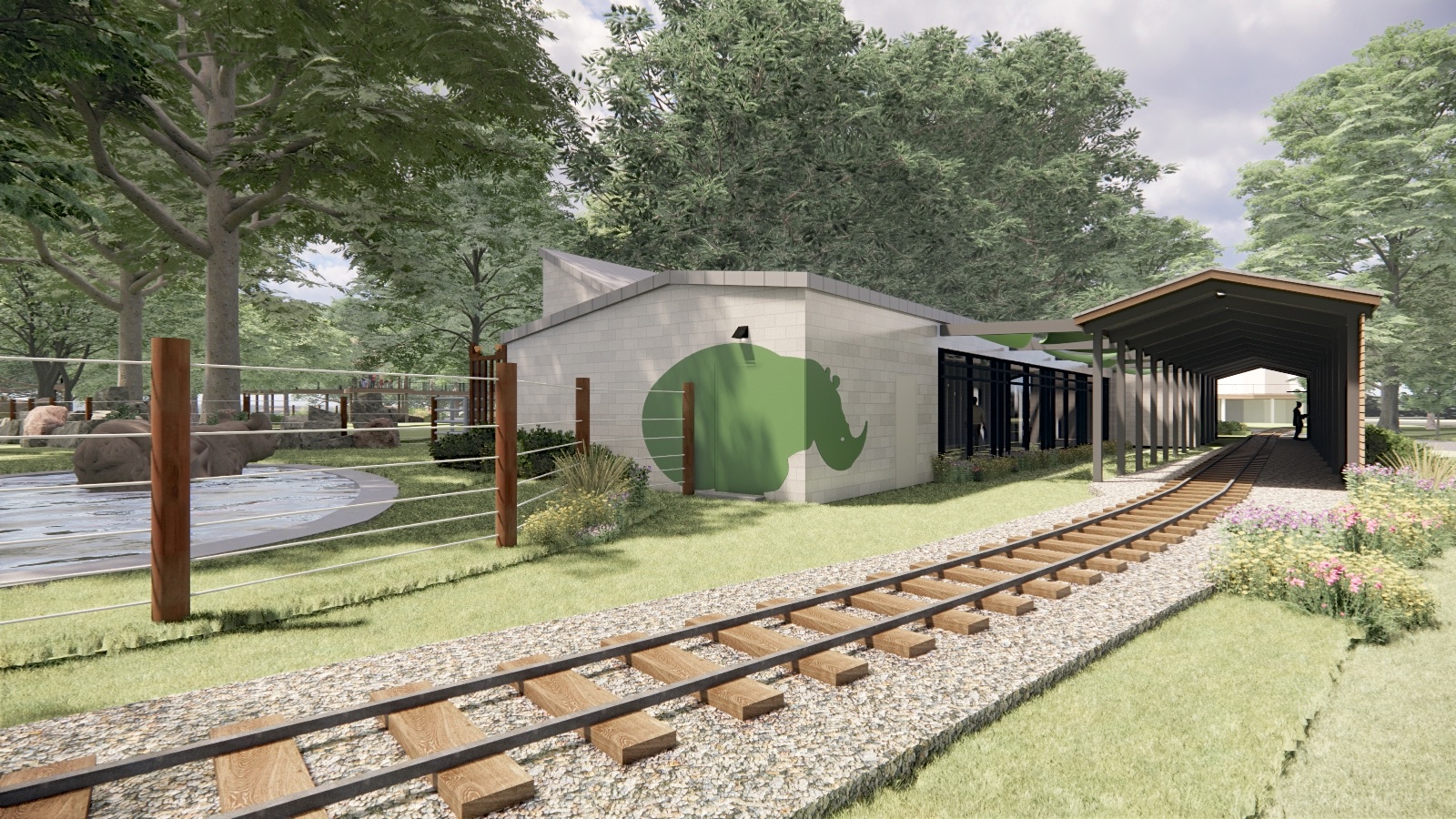
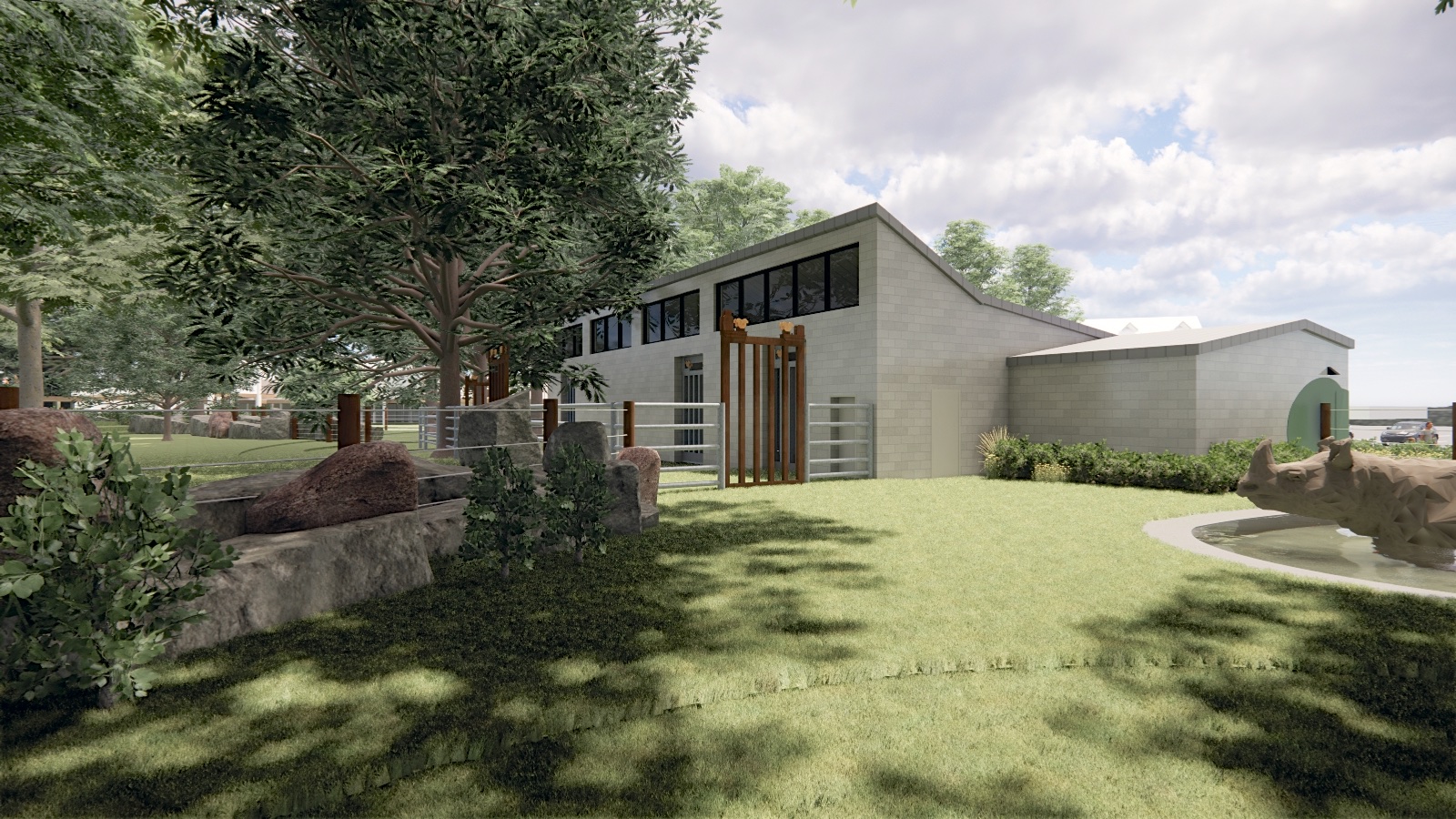

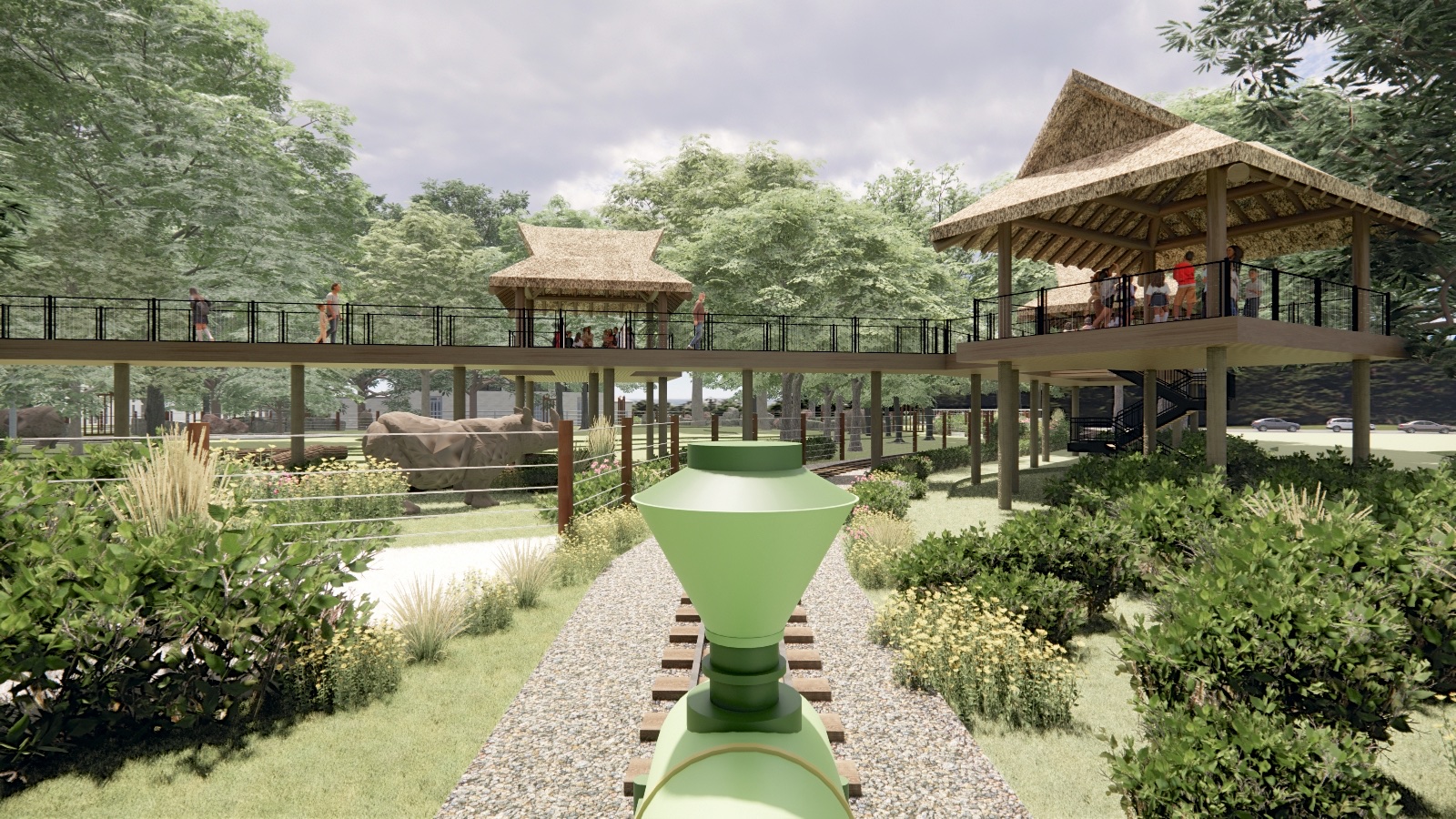
The site for the Rhino Exhibit is dotted with several large trees that will be
preserved to enhance the environment and provide natural shade for the Exhibit
Yards and visitors. On the northwest side of the site, three Tree-houses
will be installed, seamlessly connecting to the existing boardwalk of Asia
Trail. Nestled among the trees, these elevated structures create a secluded
ambiance and serve as venues for educational programs, guided tours, and
events.
Drawing architectural inspiration from traditional buildings in Assam, India—
the native habitat of the Greater One-Horned Rhinos and home to their
largest population—the design of the Tree-houses are designed a timber
structure with a thatched roof, reflecting the proportion and materials typical
of vernacular dwellings. One of these Tree-houses is strategically positioned
inside the Exhibit Yard, offering visitors an up-close view of the rhinos and
an immersive perspective of the entire exhibit.
Additionally, the train track will run underneath the bridge that connects the
Tree-houses, providing train riders with a unique vantage point that enhances
their experience.
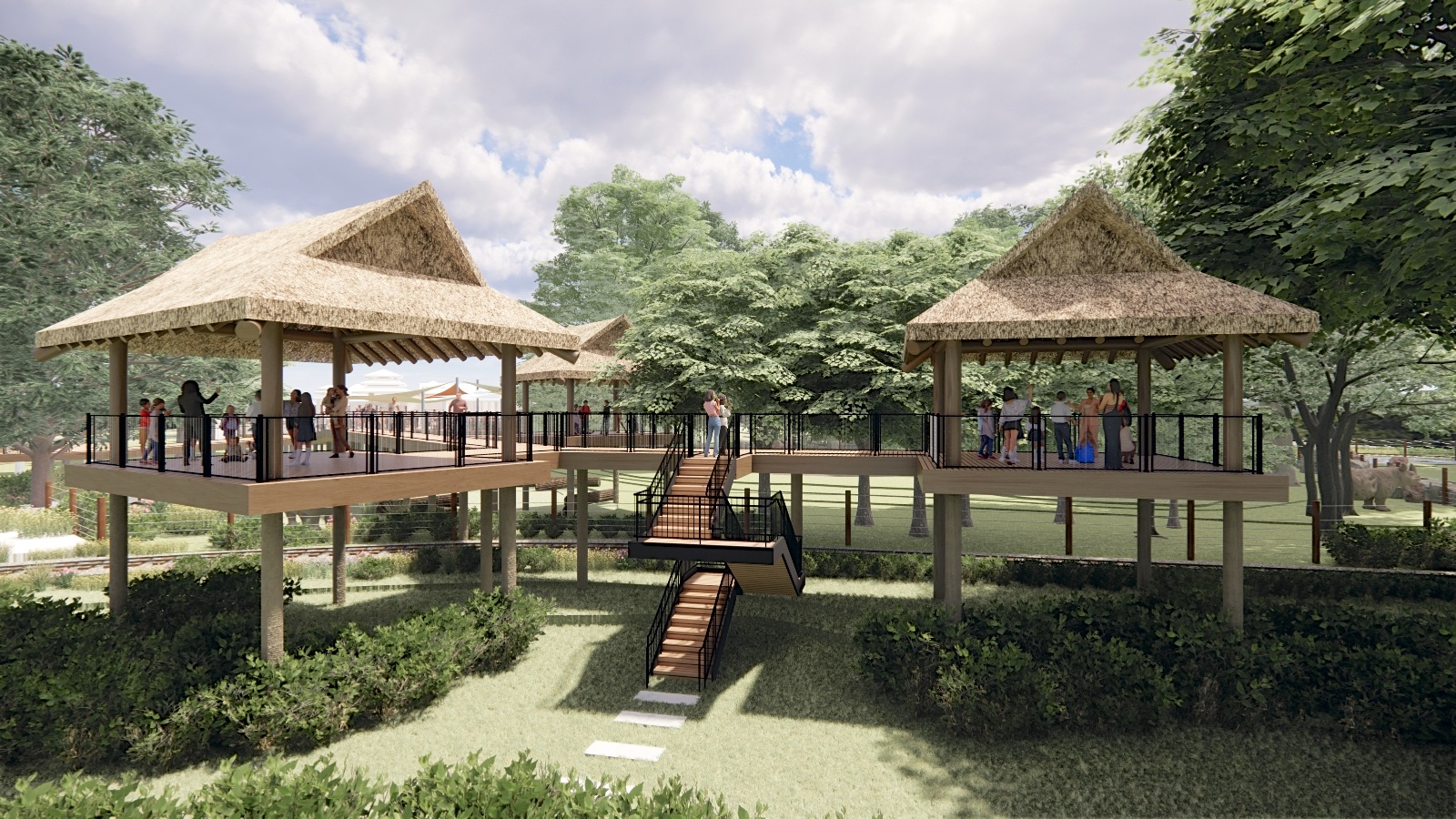
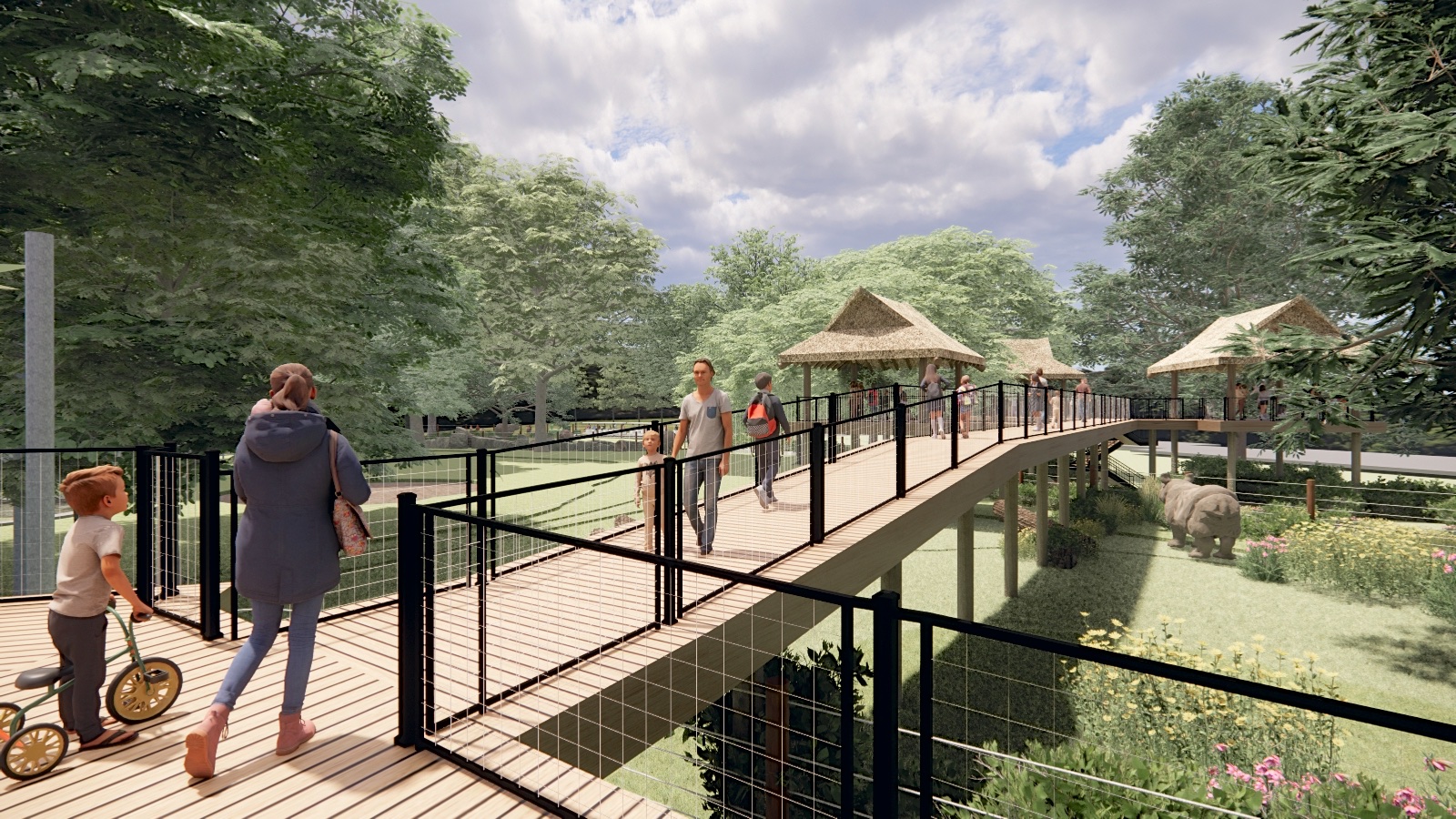
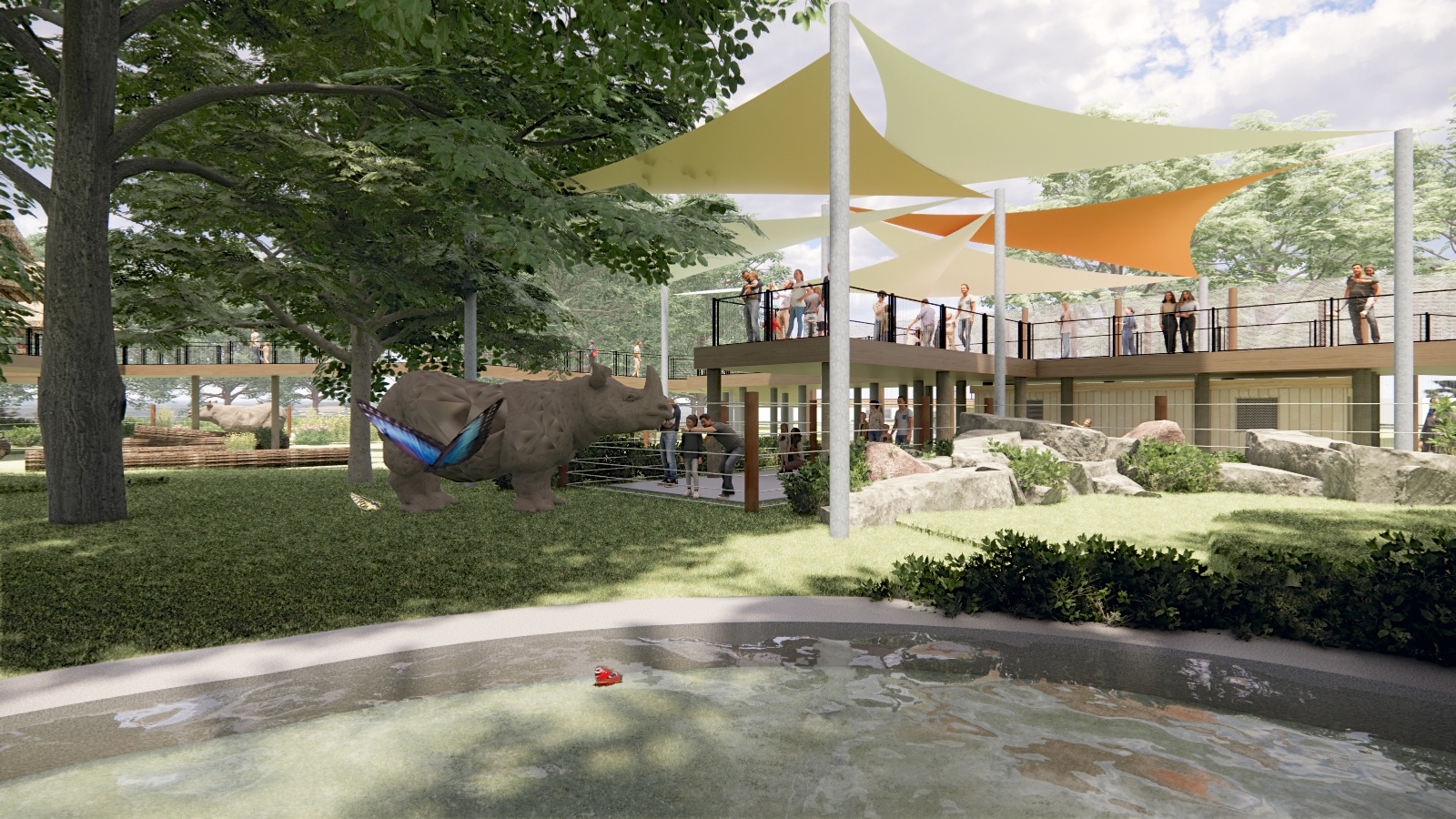
The site for the Rhino Exhibit is dotted with several large trees that will be
preserved to enhance the environment and provide natural shade for the Exhibit
Yards and visitors. On the northwest side of the site, three Tree-houses
will be installed, seamlessly connecting to the existing boardwalk of Asia
Trail. Nestled among the trees, these elevated structures create a secluded
ambiance and serve as venues for educational programs, guided tours, and
events.
Drawing architectural inspiration from traditional buildings in Assam, India—
the native habitat of the Greater One-Horned Rhinos and home to their
largest population—the design of the Tree-houses are designed a timber
structure with a thatched roof, reflecting the proportion and materials typical
of vernacular dwellings. One of these Tree-houses is strategically positioned
inside the Exhibit Yard, offering visitors an up-close view of the rhinos and
an immersive perspective of the entire exhibit.
Additionally, the train track will run underneath the bridge that connects the
Tree-houses, providing train riders with a unique vantage point that enhances
their experience.
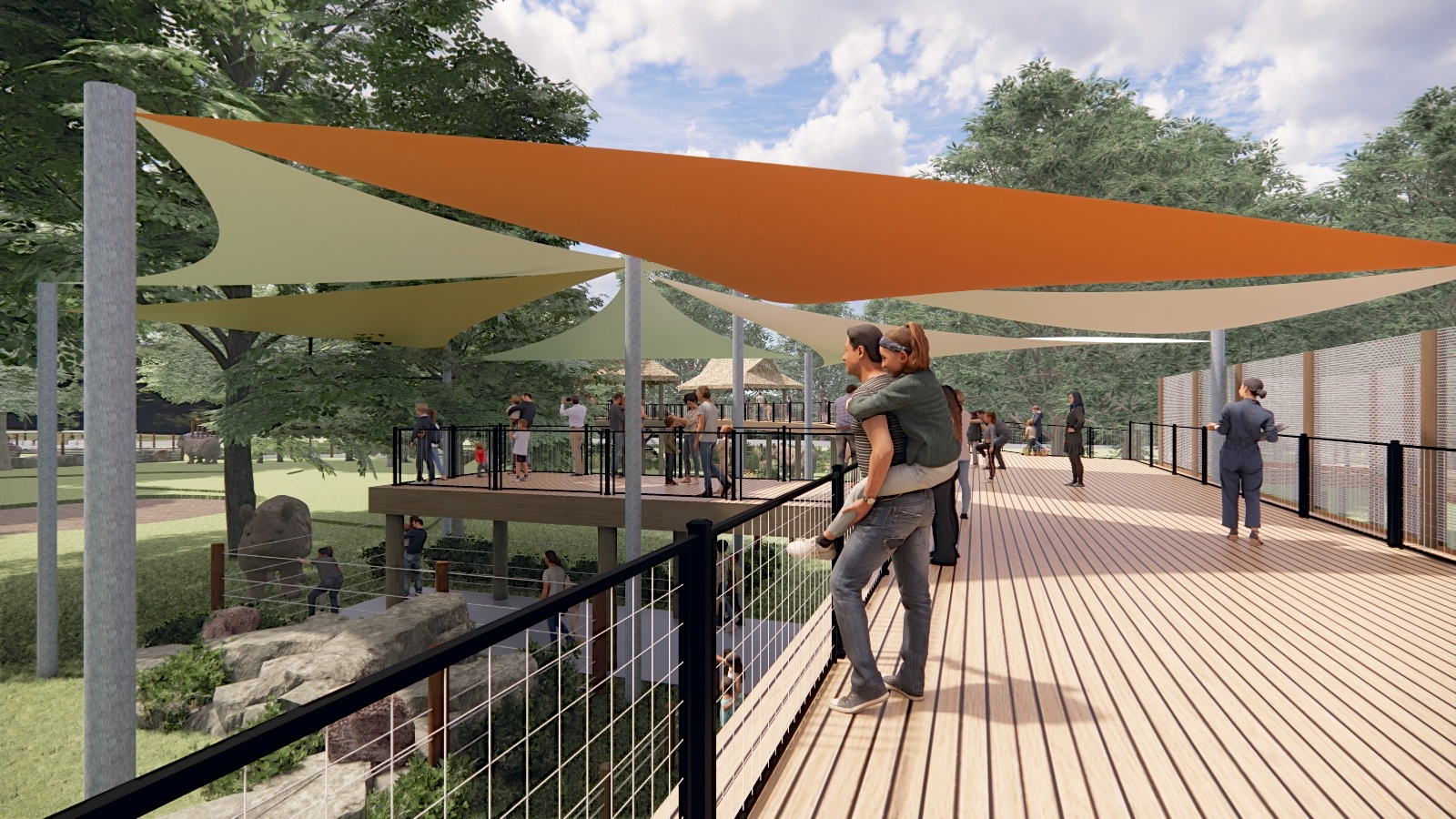
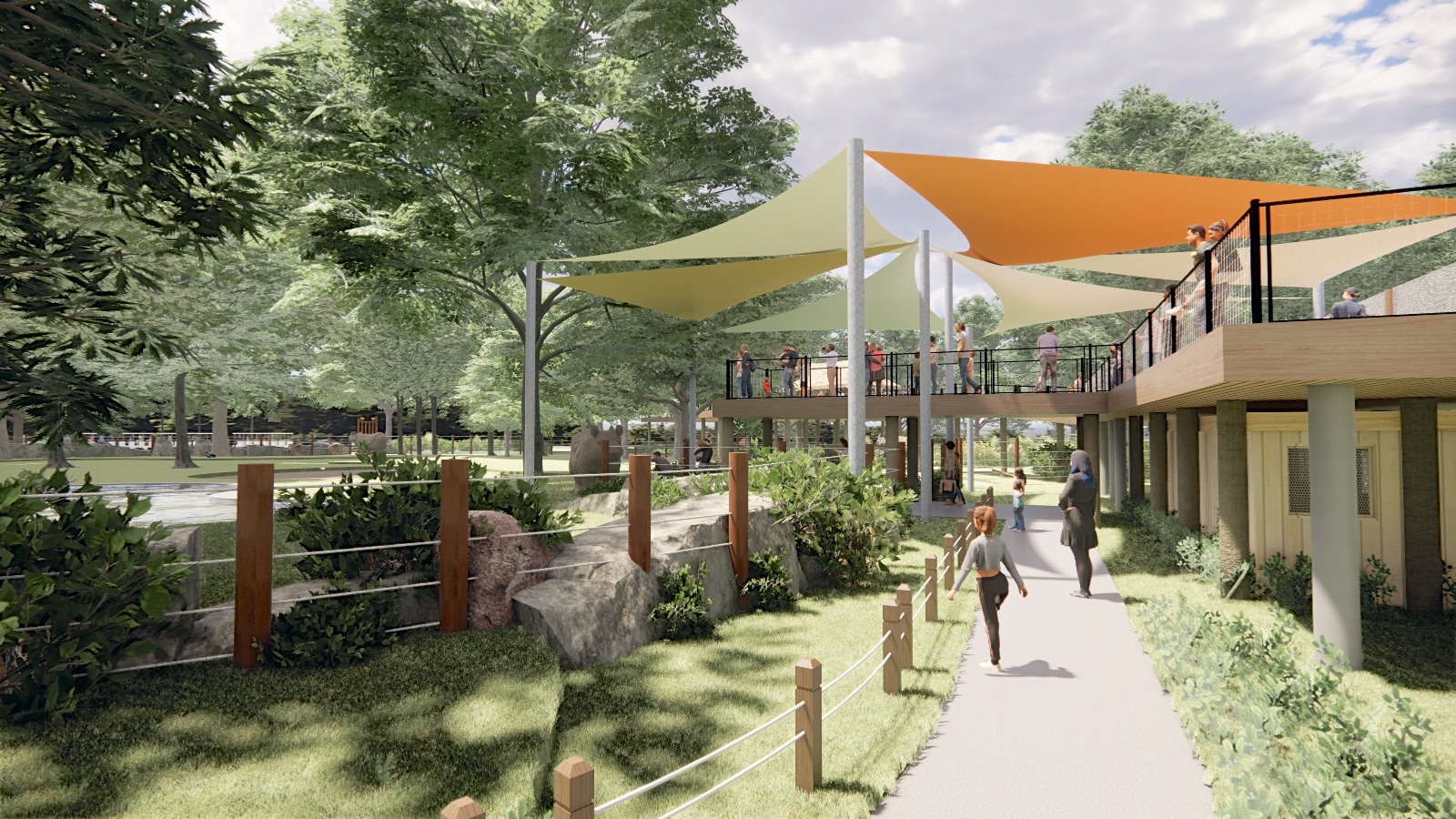
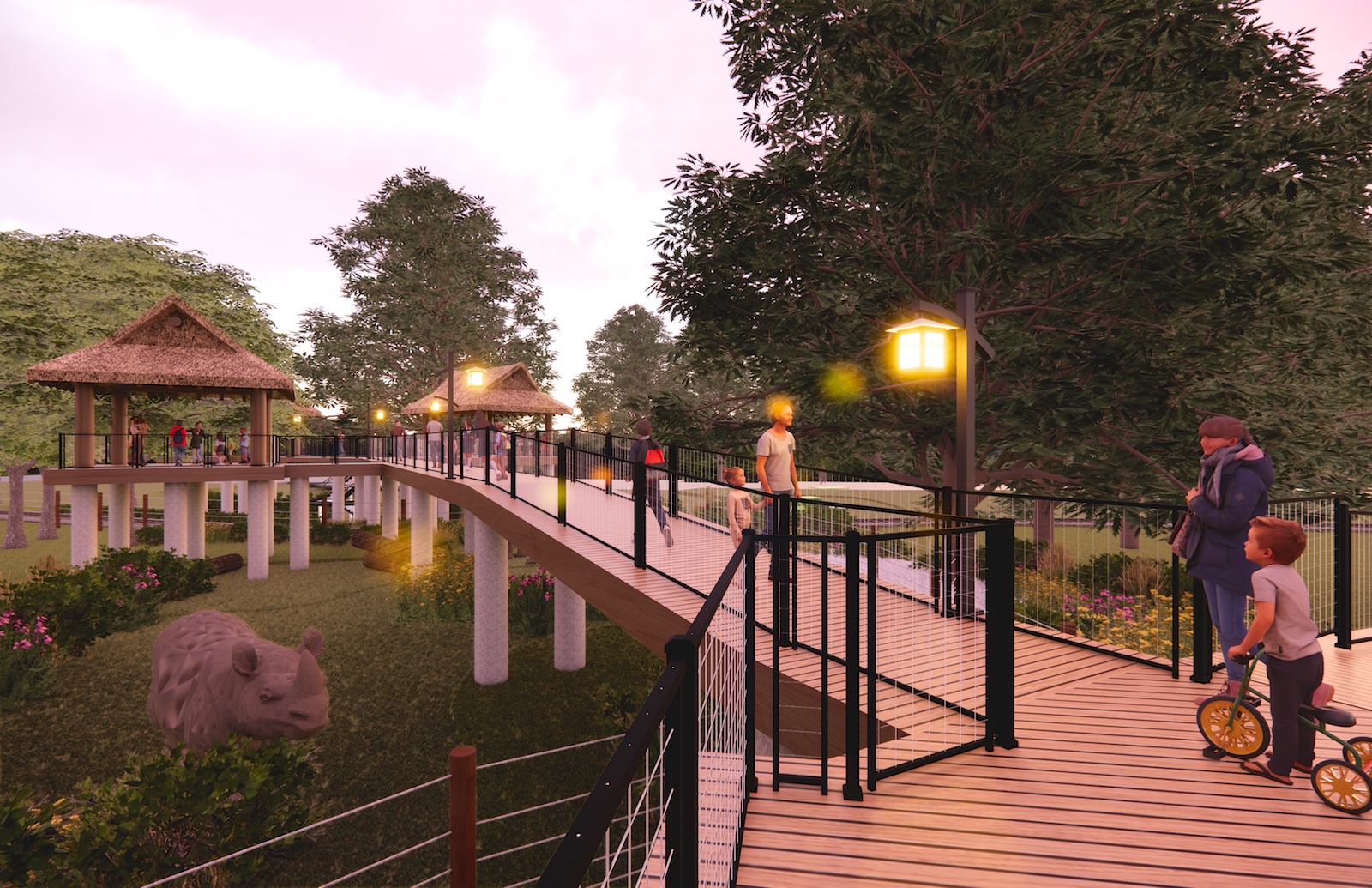
Client
"..."


